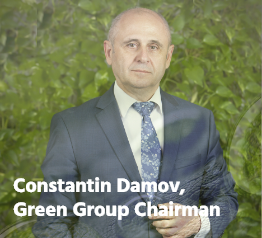Circular economy is not just a fancy trend, it is an economic model. A circular economy goes beyond the current extract-use-dispose industrial model, to create circular systems that gain the maximum value from resources. In the center of the circular economy is the recycling industry which turn into advantages a renewable resource.

GreenFiber has created value from PET waste for many years – long before the term circular economy was coined. Being a sister-company of GreenTech, Europe’s largest recycler of PET bottles and benefiting from long resource-effective synergies, we continuously find new methods of creating value from our own waste materials. Thus, from recycling flakes we created a product with high complexity and superior performances.
In this way, we contribute to secure the future of our business and take long-term responsibility for the supply of PSF (Polyester Synthetic Fiber) of the highest quality to society.
Such a circular approach not only reduces environmental degradation and ensures future generations have the resources they require, it also makes sound business sense to companies operating today.
Our activity is based on the three principles of the Circular Economy: combating waste and pollution of the environment, keeping products and materials in use and carbon efficiency.

" Recycling and carbon efficiency are our main drivers towards a successful circular business model. We have the final responsibility for closing the loop, thus creating a global regenerative effect. With an installed recycling capacity of 460.000 t/ year, all the waste is integrated into closed loop, reducing annually 45,380 t C02.
We are a recycler and producer in the same time which gives us a satisfactory circular feeling. As a recycler, we receive waste and transform it into secondary raw materials, and as producer we give waste a new life. We are being in the same time responsible, after lifespan of products, to receive them back as a recycler. And this is how we have a circular story. "
